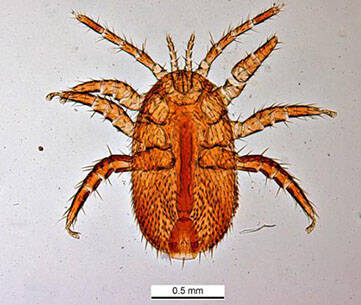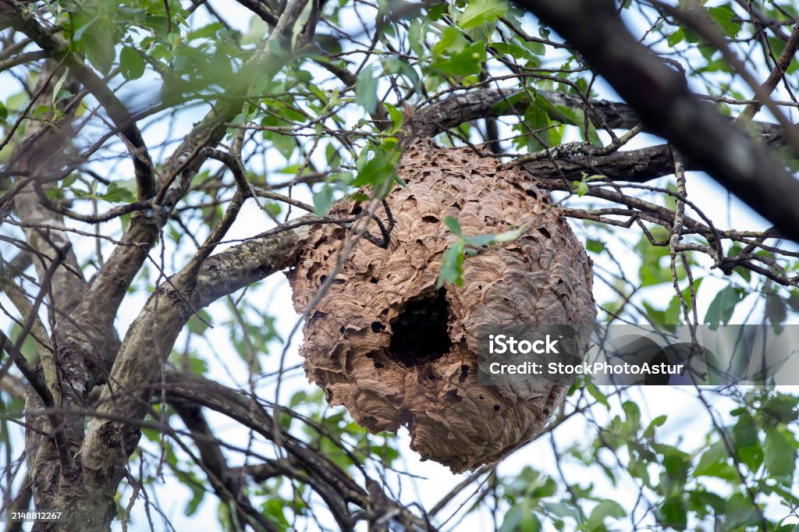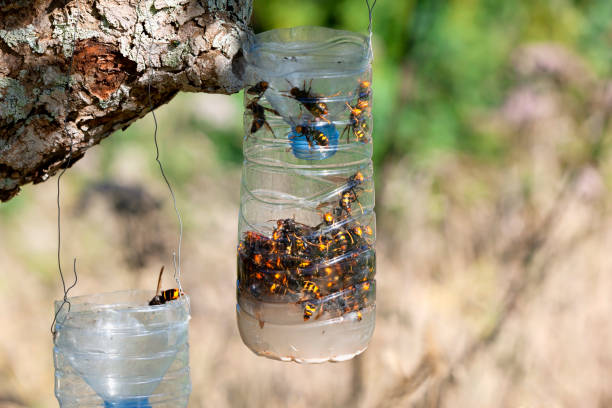Tropilaelaps Mite
The Tropilaelaps mite is a parasitic mite native to Asia that poses a significant, though currently limited, threat to honey bee populations in Western Europe. While not yet established in Western Europe, its recent spread into nearby regions and its potential to cause severe damage to bee colonies make it a major concern for beekeepers and regulatory bodies.
What is the Tropilaelaps Mite? 🔎
The Tropilaelaps mite (specifically the species T. clareae and T. mercedesae) is an external parasite that targets honey bee brood. Roughly a third the size of the more common Varroa mite, this fast-moving, reddish-brown mite feeds on the hemolymph (the bee's blood) of developing bee larvae and pupae within capped brood cells. Unlike the Varroa mite, Tropilaelaps cannot survive for long on adult bees because its mouthparts cannot pierce the adult bee's tough exoskeleton. This means it must have access to bee brood to survive and reproduce.
The mite's lifecycle is similar to that of Varroa, but it has a much faster reproductive rate. A female mite enters a brood cell, lays eggs, and the new mites emerge with the young adult bee to find new brood cells. This rapid reproduction can lead to mite populations that quickly overwhelm a colony, even outnumbering Varroa mites.
Threat to Bees in Western Europe 🌍
Currently, the Tropilaelaps mite is not established in Western Europe. However, it's considered a serious threat due to a number of factors:
-
Proximity and Spread: The mite has been confirmed in regions of western Russia and Georgia, marking its continued westward movement from its native Asia. This geographical creep, likely aided by the trade and migration of bee stocks, brings it closer to Western Europe.
-
Devastating Impact: An infestation can cause devastating effects similar to those of the Varroa mite, but often more rapidly due to the mite's faster reproductive cycle. These effects include:
-
Deformed Bees: Parasitized bees may emerge with deformed wings, legs, and abdomens.
-
Colony Weakening and Collapse: The mites' feeding weakens the developing bees, leading to shorter lifespans, lower body weight, and a general decline in the colony's health and population.
-
Virus Transmission: Like Varroa, the mite is a known vector for viruses, such as Deformed Wing Virus (DWV), which further compromises bee health.
-
-
Climate Change: While it was previously thought that the mite couldn't survive in areas with a winter brood break, research suggests that as winters become milder in parts of Western Europe, colonies may maintain year-round brood production, providing the mites with the continuous food source they need to survive.
-
Difficulty in Detection: Because Tropilaelaps spends very little time on adult bees, it's harder to spot than Varroa. This makes early detection difficult, which is crucial for preventing a widespread infestation.
Because of this threat, the mite is classified as a notifiable pest in many European countries. This means beekeepers are legally required to report any suspected sightings to the authorities immediately to allow for rapid intervention and prevent its establishment.

Asian Hornet
The invasion of the Asian hornet, Vespa velutina, presents a grave and multifaceted threat to honeybee populations and the beekeeping industry, particularly in regions where it has been introduced. Unlike native hornet species, the European honeybee (Apis mellifera) has not co-evolved alongside the Asian hornet and therefore lacks effective natural defenses against it. This lack of resistance makes honeybee colonies highly vulnerable to the hornet's aggressive predatory tactics.
The danger posed by the Asian hornet can be categorized into direct and indirect impacts on honeybee colonies.
Direct Predation and Colony Collapse
The most visible and devastating danger is the hornet's direct predation. Asian hornets are voracious hunters, and their diet is heavily reliant on other insects, with honeybees being a primary target. A single hornet can kill dozens of bees in a short period. The hornets employ a predatory behavior known as "hawking," where they hover in front of a hive entrance, capturing bees as they leave or return from foraging. They then decapitate the bees and strip them of their legs and wings, carrying the protein-rich thorax back to their nest to feed their larvae.
The cumulative effect of this constant predation is catastrophic. As the hornet population grows, especially in late summer and autumn when their nests are at their largest and require vast amounts of protein, the attacks intensify. The relentless hunting can deplete a honeybee colony of its foragers at a critical time of year, leaving the hive weak and unable to gather the necessary pollen and nectar to survive the winter. In extreme cases, a few hornets can decimate an entire beehive, killing tens of thousands of bees and leading to the complete collapse of the colony.
Based on recent news reports, there has been a significant development regarding the Asian hornet (Vespa velutina) in Ireland.
A recent sighting and subsequent capture of a single Asian hornet in the Cork area has been confirmed by the National Parks and Wildlife Service (NPWS). This is a critical event, as it is only the second confirmed record of the species in Ireland. The first was a single individual found in Dublin in 2021, which was not believed to be part of an established population.
Key points from the recent news include:
-
Biosecurity Alert: The sighting has triggered a "biosecurity alert" across Ireland.
-
Government Response: In response to the discovery, a new government-led task force, the Asian Hornet Management Group (AHMG), has been established. This group, chaired by the NPWS, includes the Department of Agriculture, Food and the Marine, the National Biodiversity Data Centre, and the National Museum of Ireland. Their purpose is to coordinate efforts, gather information, and monitor the situation.
-
Public Vigilance Urged: The public, especially beekeepers, are being asked to be vigilant and report any suspected sightings. The NPWS and the National Biodiversity Data Centre are stressing that early detection is crucial to prevent the establishment of the invasive species.
-
Monitoring Underway: A survey team was deployed to the Cork area to conduct extensive monitoring and surveying. While initial searches found no evidence of a nest, a hornet was later trapped, confirming its presence. Monitoring will continue to determine if it was an isolated individual or part of a larger population.
-
No Significant Public Health Risk: Officials have clarified that while the hornet can sting, its discovery does not pose a significant public health risk. The main concern is the threat it poses to native biodiversity and pollinators, particularly honeybees.
The sighting in Cork has also led to an urgent warning for Northern Ireland, with the Northern Ireland Environment Agency (NIEA) urging people to be vigilant. The NIEA and NPWS are collaborating on an All-Island Biosecurity and Invasive Species Initiative to ensure the island is prepared for a potential threat.
The public is advised to report any suspected sightings, with a photograph if possible, to the National Biodiversity Data Centre's Alien Watch reporting portal. They are also being warned not to disturb or attempt to deal with a suspected nest.
Asian Hornet


